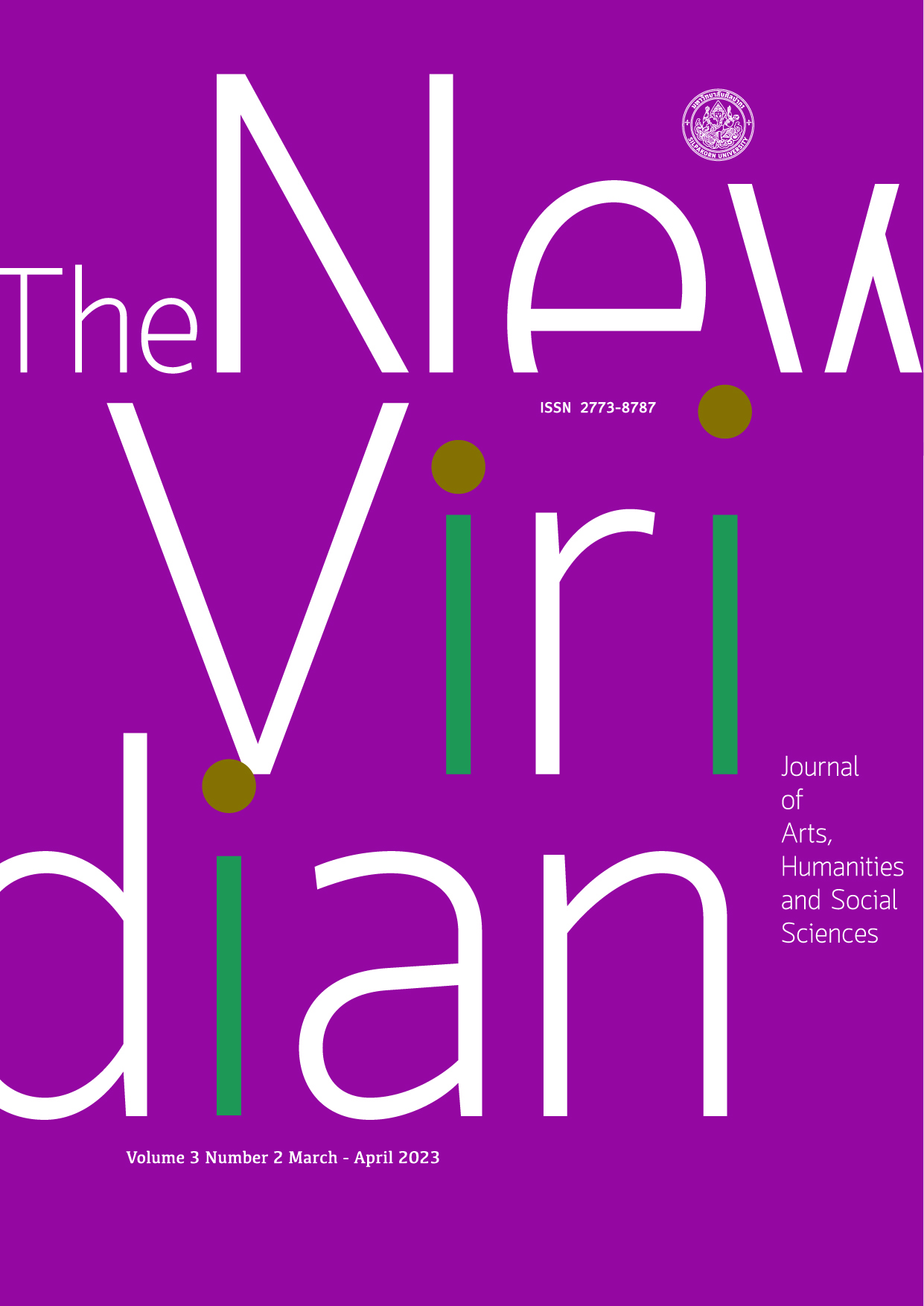National Memory and Cultural Identity: The Costume Huifu Niaozhang Decoration of Guizhou Province
คำสำคัญ:
Cultural identity, Hmong Huifu Niaozhang, Symbolic of Miao costume, Folk beliefsบทคัดย่อ
The costumes of various ethnic groups in China are not only used as a tool to keep out the cold and skin care, but also a body decoration symbolizing the culture of different ethnic groups, known as the "second skin". The ethnic costumes of each region have distinct characteristics, reflecting the cultural beliefs and ethnic characteristics of their own nation. The costumes of different ethnic groups reflect the cultural characteristics and aesthetic values of different ethnic groups in different regions. They are the embodiment of an important symbol and are recognized. The purpose of this paper is to answer the academic interest in national historical memory and human cultural identity. The researcher attempts to study the artistic symbols, folk symbols, and the relationship between them through in-depth field research on the traditional costumes of the Ganao branch of the Miao ethnic group in southeastern Guizhou Province, China, this study determined the artistic symbols and meanings of the costumes which the Miao people's living environment, social activities, folk beliefs, and regional culture. are inseparable and influence each other. The results show that: (1) The traditional Miao costume with Huifu Niaozhang is a practical art under the accumulation of wisdom, hard work and systematic civilization of the Miao people provide the exquisite and unique graphic symbols. (2) The traditional Miao nationality's Huifu Niaozhang symbol expresses the strong aesthetic value, spiritual value and folk customs value of the Miao people. (3) Influenced by folk costumes and social activities, as a unique symbol of the Miao nationality, Huifu Niaozhang clothing has formed its own unique cultural and artistic style. Therefore, Bainiaoyi costumes have extremely high artistic and cultural value.
References
An, L. Z. (2019). The Symbolic Function of National Costumes and the Construction of Ethical Order—Taking Miao Nationality Costumes as an Example (贵州大学学报). Guiyang: Guizhou University Press. [in Chinese]
Chen, L., & Zhou, W. (2021). A Hundred Birds Sacrifice to the Spirit. An Interpretation of the Patterns of the Hundred Bird Clothes of the Miao Nationality in Guizhou, Silk (丝绸). Hangzhou: Zhejiang SCI-TECH University Press. [in Chinese]
Chen, X. J., & Chen. J. Y. (2022). Protection, Inheritance, Development and Mutual Learning of Chinese National Culture: From the Perspective of Xi Jinping's Important Discourse on Cultural Construction, Guizhou Ethnic Studies (贵州民族研究). Guiyang: Guizhou National Research Institute. [in Chinese]
Feng, Y. J., & Li, J. (2019). Creating National Cultural Symbols: The Value Construction of Chinese Traditional Cultural IP from the Perspective of Cultural Consciousness, China Editor (中国编辑). Beijing: Higher Education Press. [in Chinese]
Hu, R. B., Dong, J. H., & Du, Y. Q. (2022). On the Cultural Expression of Miaolong in Fangnan Miao Costumes from the Perspective of Semiotics, Guizhou Ethnic Studies (贵州民族研究). Guizhou: Guizhou National Research Institute Press. [in Chinese]
Kang, D. (2018). A Semiotic Interpretation of Cultural Memory, Foreign Literatures (外国文学). Master’s dissertation, Beijing Foreign Studies University, Beijing, China. [in Chinese]
Liao, C. C. (2018). Huifu Niaozhang Research on Decoration of Miao Nationality Silkworm Embroidered Bird Clothes, Decoration (装饰). Beijing: Tsinghua University Press. [in Chinese]
Li, Q. J., Wu. T. L., Zhen, H., & Long, X. (2018). Decorative Embroidery Patterns and Craftsmanship of the Hundred Birds Clothes of the Miao Nationality in Guizhou, Silk (丝绸). Hangzhou: Zhejiang SCI-TECH University Press. [in Chinese]
Li, S. Q., & Zang. J. Y. (2020). The Third Leap: Semiotics of Communication in the Background of New Technology, Zhejiang Social Sciences (浙江社会科学). Hangzhou: Zhejiang Federation of Social Science Circles. [in Chinese]
Lin, R. X. (2015). The Meaning of Semiotics in Ancient Chinese Painting (写作). Wuhan: Wuhan University Press. [in Chinese]
Liu, Z. (2016). The Application of National Cultural Symbols in Art Design, Cultural Life (文艺生活). Changsha: Hunan Mass Art Museum. [in Chinese]
Wang, J. M. (2019). Hundred Birds Clothes and Village Community Philosophy, China Social Science Network. [Online]. Retrieved December 10, 2019 from http://www.cssn.cn/mzx/tybj/201912/t20191210-5056060.shtml [in Chinese]
Yu, X. (2008). Saussure's Theory of Symbols, Journal of Jiangsu Institute of Technology (江苏理工学院学报). China: Jiangsu Institute of Technology Press. [in Chinese]
Yu, X. H. (2019). Research on the Relationship between Cultural Identity and the Harmonious Development of Ethnic Areas—Taking the Development of Yunnan Ethnic Culture as an Example, Journal of Zhengzhou Aviation Industry Management Institute (郑州航空工业管理学院学报). Zhengzhou: Zhengzhou Aviation Industry Management Institute. [in Chinese]
Zhou, T., Bo, J., Cheng, Y. S., & Wang, X. H. (2020). Research on the Design Method of Zodiac Cultural and Creative Products under the Path of Semiotics, Packaging Engineering (包装工程). Chongqing: Chongqing Wujiu Journal Club. [in Chinese]

